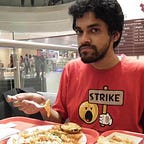The case for legitimizing quacks
Government of India recently tabled the National Medical Commission Bill in Parliament. People were suitably aghast at the provision in the bill that allows AYUSH (Ayurveda, Homeopathy etc) practitioners to complete a bridge course and then be able to, effectively, practice allopathy:
“Clause 49 provides for joint sittings of the Commission, Central Councils of Homoeopathy and Indian Medicine to enhance interface between their respective systems of medicine. Such meeting shall be held at least once a year. The joint sitting may reside on approving educational modules to develop bridges across the various systems of medicine and promote medical pluralism.”
On its face, this seems like a bad move (and it possibly is). Yes — I would not go to any of them for consultation. These healthcare providers are part of the informal sector, with dubious training if any and questionable practices. Regulating them remains a challenge and the state assigning them credibility seems undesirable.
However, it also may be a decent idea, given the inadequacies of the Indian health sector. A study by Jishnu Das et al found that: “ Training improved the ability of informal providers to correctly manage the kind of conditions they may see in their clinics, but it did not decrease their overuse of unnecessary medicines or antibiotics.”
Also sample this: “ In rural Madhya Pradesh for instance, 70 per cent of healthcare providers working in the private sector lack any formal training — but they are the first point of contact for 77 per cent of all doctor visits. Similar numbers are found in states such as West Bengal, Rajasthan, Andhra Pradesh and Uttarakhand.
In essence, most of India’s medical care is provided by people who (legally) don’t exist.”
And this:
“ …demonstrates that people receive the same quality of care between informal providers and public-sector clinics in the same setting; it also shows that the same doctor provides higher quality care in his private clinic relative to the public one.”
For fuller context read this and this.
Prerna Singh (she of the subnationalism and welfare fame) also has a book coming out soon which has similar lessons:
“Using theories from communication and cognitive psychology, Singh explained that biomedical technologies against a disease rarely exist in a void. Instead, when a new biomedical technology such as a vaccine or anti-retro virals are introduced a community, they frequently encounter competition with a range of long-standing ritual, cultural, and indigenous medical beliefs and practices, which can be impediments to adaption of the new technology.
Singh argued that in order for technologies to be received more positively, they should be embedded within existing cultural understandings of the disease. The main takeaway for political scientists and public health professionals is that people are more likely to adopt a new disease-controlling technology when it is presented within, rather than as a radical break from, familiar cultural and medical understandings.”
The argument for the bridge course for AYUSH folks is this — a) India has a massive shortage of certified medical professionals b) This gap is plugged right now by quacks who don’t have the expertise but have the trust of the population they’re serving c) Barring an unprecedented supply of certified medical professionals in the near future, we’re stuck with this state of affairs for a while d) We might as well leverage the trust that these quacks have, teach them something useful and redeploy them. Of course, the correct position is to demand higher spending on health, graduating doctors factors of magnitude more than we are doing right now and distributing them equitably across the country. While all this happens, it’s not a terrible idea to use what we already have. I would have liked to have seen some more districts experiment with this and some more evidence brought to bear but let’s hope someone’s tracking if this new idea is working or not.
But then, people who’ve been tracking Indian health for a long time are not pleased. How much should you really update your priors based on a dilettante’s post?
